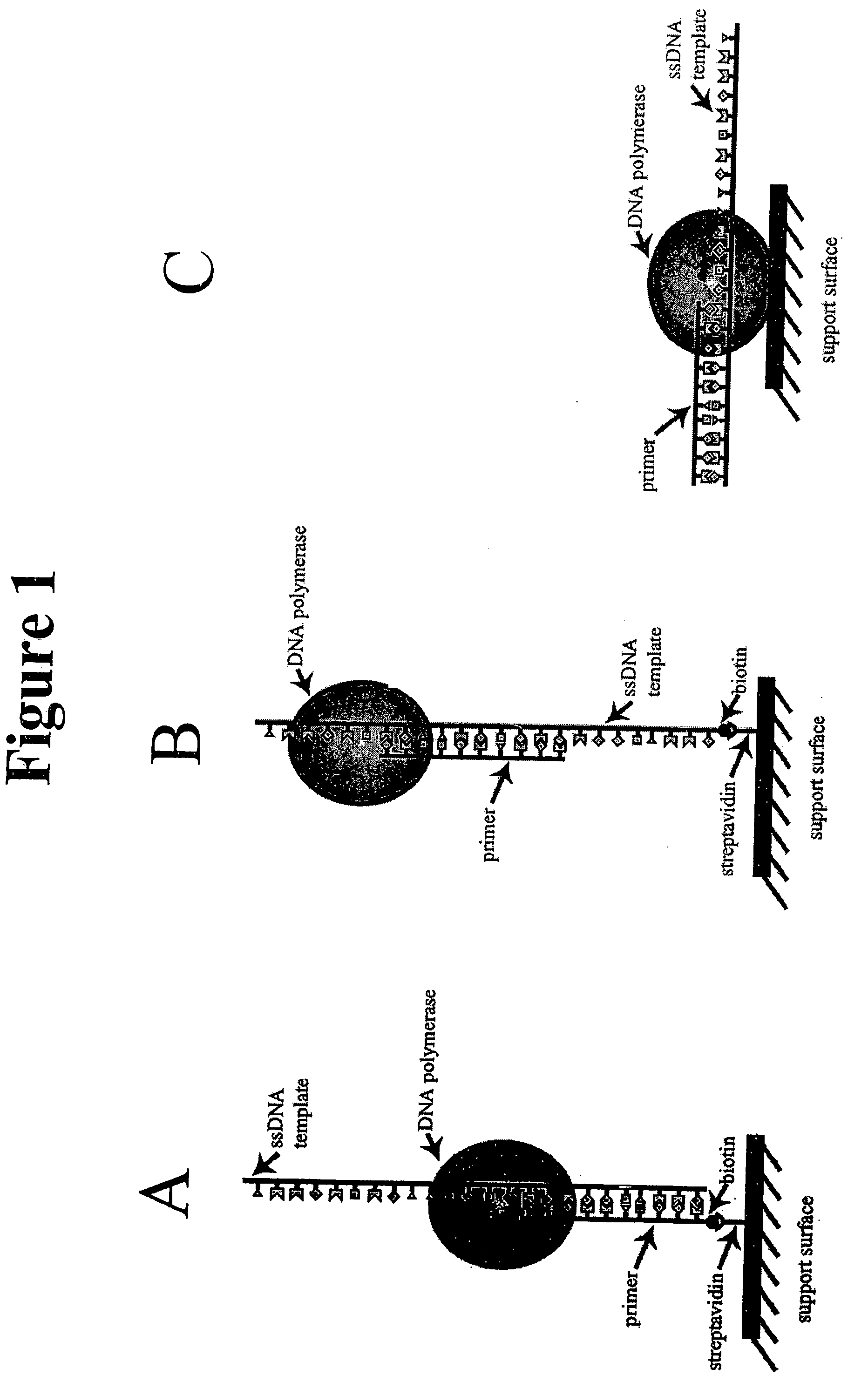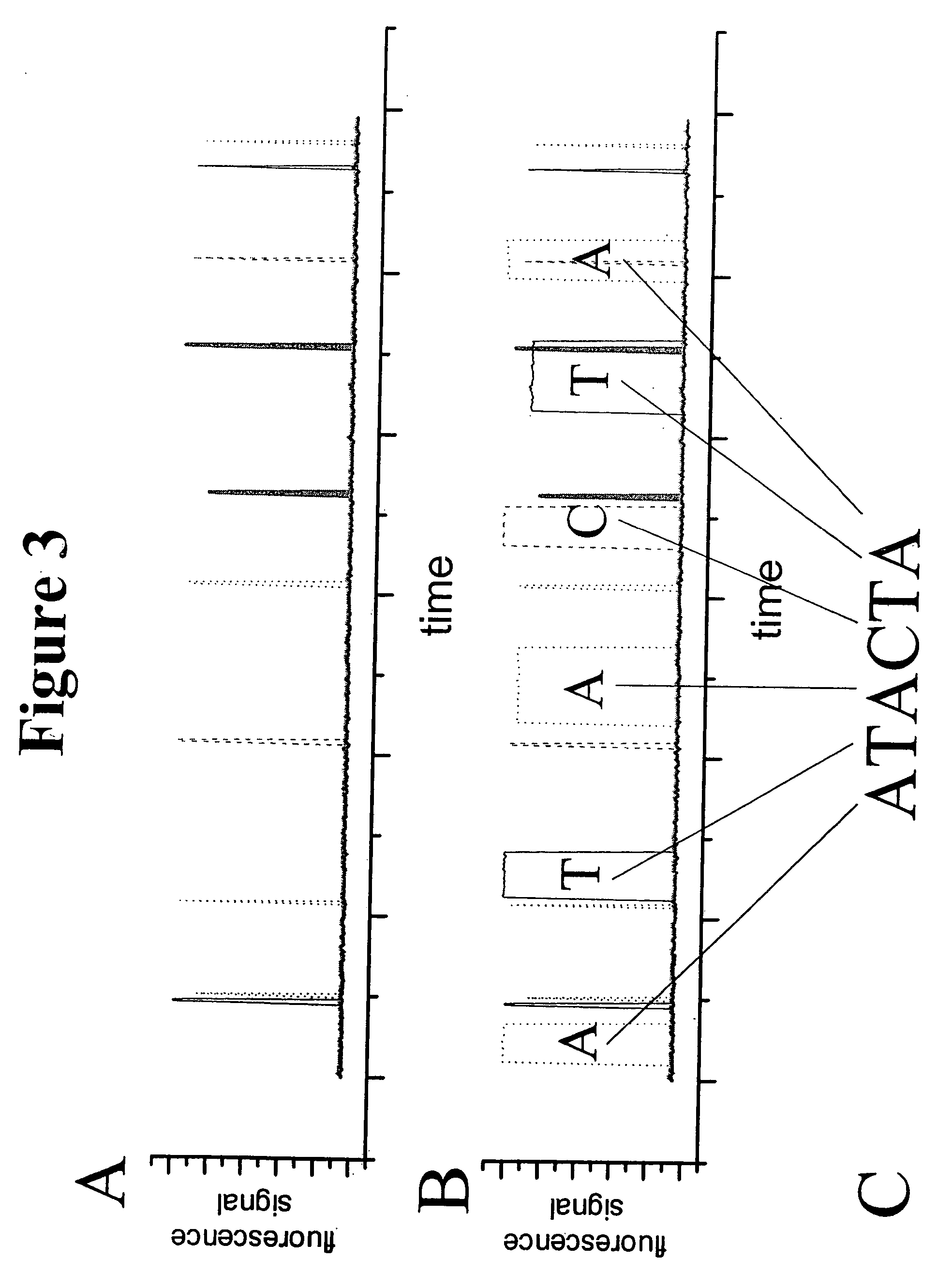Method for sequencing nucleic acid molecules
- Summary
- Abstract
- Description
- Claims
- Application Information
AI Technical Summary
Benefits of technology
Problems solved by technology
Method used
Image
Examples
Embodiment Construction
[0032] The present invention relates to a method of sequencing a target nucleic acid molecule having a plurality of nucleotide bases. This method involves providing a complex of a nucleic acid polymerizing enzyme and the target nucleic acid molecule oriented with respect to each other in a position suitable to add a nucleotide analog at an active site complementary to the target nucleic acid. A plurality of types of nucleotide analogs are provided proximate to the active site, wherein each type of nucleotide analog is complementary to a different nucleotide in the target nucleic acid sequence. A nucleotide analog is polymerized at an active site, wherein the nucleotide analog being added is complementary to the nucleotide of the target nucleic acid, leaving the added nucleotide analog ready for subsequent addition of nucleotide analogs. The nucleotide analog added at the active site as a result of the polymerizing step is identified. The steps of providing a plurality of nucleotide ...
PUM
| Property | Measurement | Unit |
|---|---|---|
| Resonance energy | aaaaa | aaaaa |
| Fluorescence | aaaaa | aaaaa |
| Thermal stability | aaaaa | aaaaa |
Abstract
Description
Claims
Application Information
 Login to View More
Login to View More - R&D
- Intellectual Property
- Life Sciences
- Materials
- Tech Scout
- Unparalleled Data Quality
- Higher Quality Content
- 60% Fewer Hallucinations
Browse by: Latest US Patents, China's latest patents, Technical Efficacy Thesaurus, Application Domain, Technology Topic, Popular Technical Reports.
© 2025 PatSnap. All rights reserved.Legal|Privacy policy|Modern Slavery Act Transparency Statement|Sitemap|About US| Contact US: help@patsnap.com



